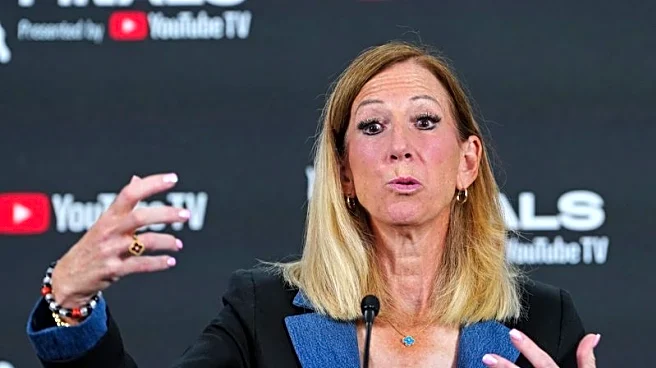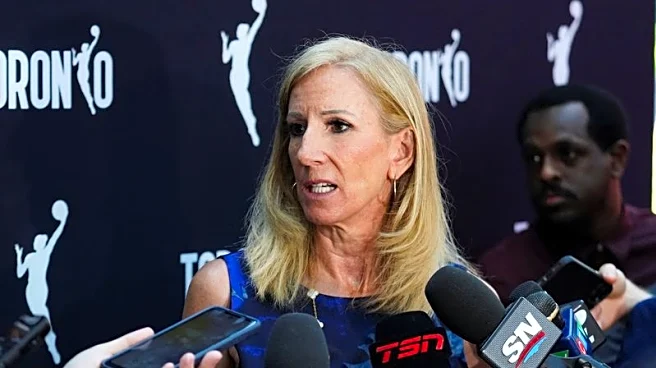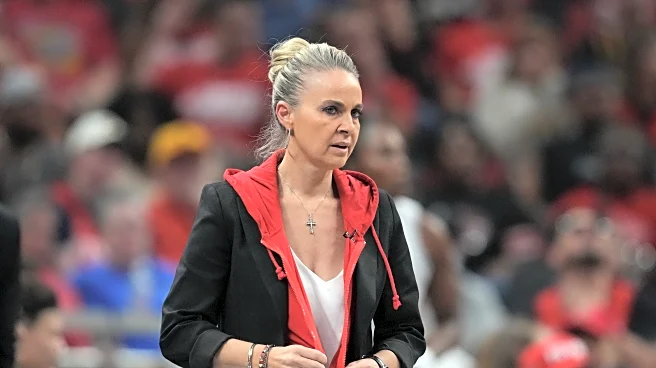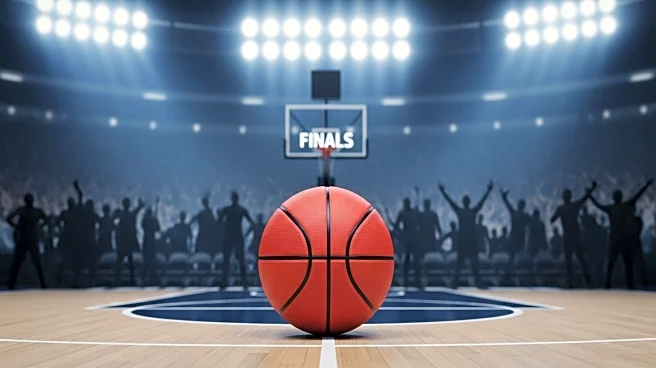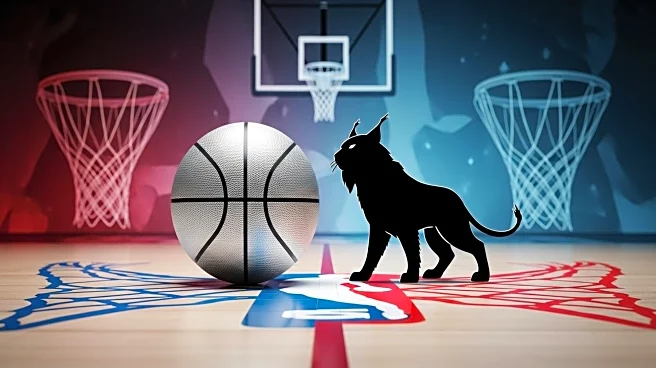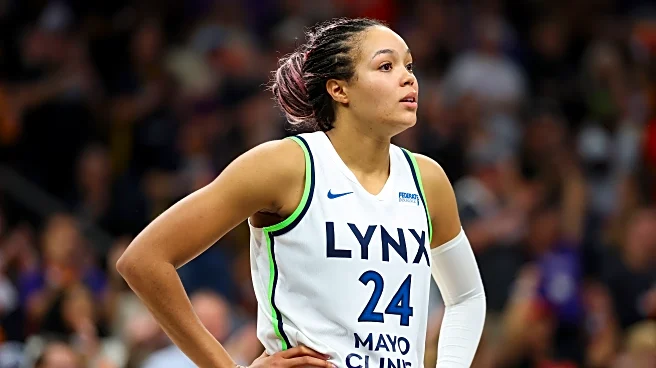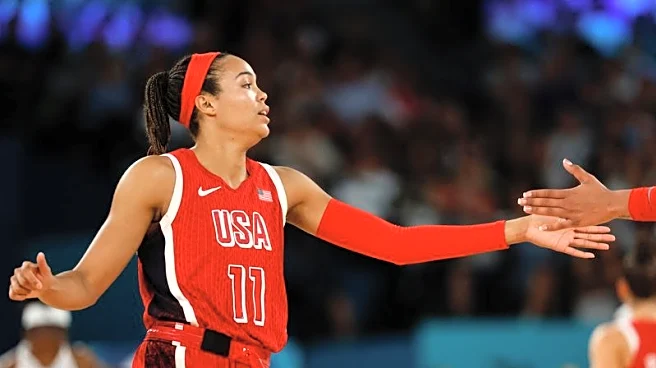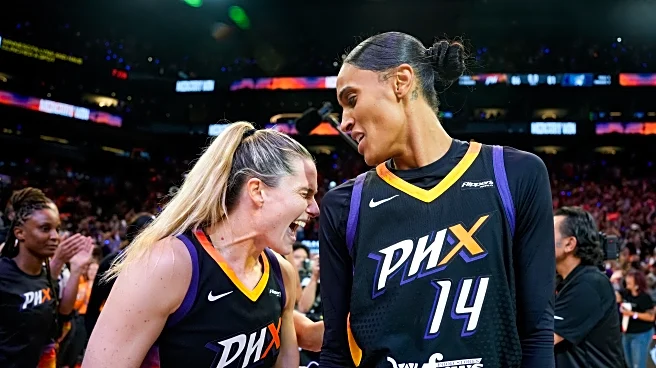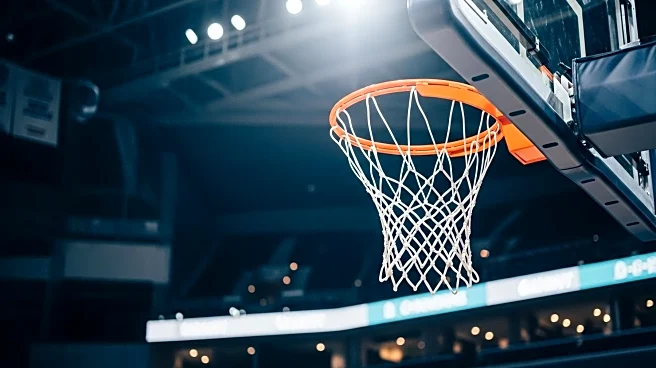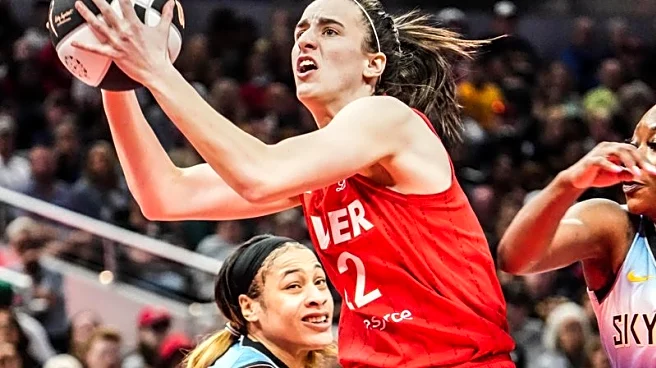The Las Vegas Aces and Phoenix Mercury are playing each other in the 2025 WNBA Finals. That series will be the first best-of-seven series in WNBA history, and it will conclude on Oct. 17 if necessary.
All games are on ESPN.
However, that is not what most fans of the league are chatting about. It’s about what will happen in 2026, and whether a 2026 WNBA season happens at all. In this season, a new Collective Bargaining Agreement will kick in.
I have written many times that the WNBA is about to enter a brand new era in 2026. Every WNBA player hitting free agency will be up for grabs. It’s an opportunity for teams, including expansion teams like the Toronto Tempo and Portland Fire, to get a head start in the team-building process. Meanwhile, for the Washington Mystics, General Manager Jamila Wideman and Monumental Basketball President Michael Winger think the Mystics are behind the Wizards in their team-building trajectories — even if the Mystics were competitive in the first half of the 2025 WNBA season.
But as basketball fans, I think we agree that it’s not a good thing when there are work stoppages, especially when a league is experiencing growth like the WNBA — even if the Mystics aren’t getting as much of that spotlight as other teams like the Aces and Mercury.
Why will there be a new Collective Bargaining Agreement?
In short, the WNBPA, the WNBA players union, opted out of the current CBA in late Oct. 2024. The original CBA was to expire after the 2026 season. However, the players opted out so the CBA now expires on Oct. 31, 2025.
There are a number of things that players wanted more at the time. They include more pay, standardization of team practice facilities and revenue sharing between players and teams. Those would still be on the table today.
Players also know that the WNBA will get a $2.2 billion media rights deal starting in 2026 which is looped in with the NBA’s new media rights deal which is starting this season. I wrote on the implications this deal would have on the Mystics specifically in this article in 2024, and I wrote another piece touching on the broader themes for all of Monumental Basketball (including the Wizards) here.
WNBA teams will see triple the media revenue of the current deal, and players stand to see some significant pay increases and an improved quality of life. However, players will still try to maximize their leverage wherever possible.
Some of the things that players want more say on is the length of the WNBA season. In 2014, when our site started writing on the Mystics games regularly, there were just 34 regular season games. Starting this season, there are 44. This gives teams more opportunity to make revenue selling tickets and it dilutes salary increases the players have. This is a sticking point, which Raptors HQ’s Chelsea Leite wrote recently.
Also, WNBA team rosters have remained at a maximum of 12 players witih many teams holding just 11 players, the minimum allowed. In fact, team rosters haven’t been bigger than 12 players since the 2008 season. In 2009, the roster size dropped to 11. The current roster limit is now 12, as per the 2014 CBA, but it has remained unchanged since then.
Why are players unhappy with the WNBA leadership?
I could write several long pieces why, but in short, players want to reap the benefits and be seen as partners with team owners for league growth, not as the pawns.
Players unions and the leagues rattle sabers regularly. But in the WNBA semifinals series between the Minnesota Lynx and Phoenix Mercury, the Lynx lost their chance to advance into the WNBA Finals for the second straight year. Lynx Head Coach Cheryl Reeve was fined suspended a game after confronting referees and making rude comments about them. And their star Napheesa Collier made some pretty bold remarks in an exit interview speech below, claiming that WNBA Commissioner Cathy Engelbert, a former women’s college basketball player herself, said that WNBA players should be grateful for their opportunities, among other things.
Zachary Draves of Swish Appeal, our general WNBA blog, has more of a pointed take on Collier’s remarks. But in short, if Engelbert is saying these things, should she be the Commissioner at all?
What leverage do the players have against the WNBA team owners?
The number one thing players have against the owners is simple: there are other playing options. During the winter, WNBA players can play overseas where many players make more money than they do at home. This has been a point of frustration for all parties.
But the incentive for American players has gone down in recent years due to existing pay increases AND alternative winter time leagues in the United States, which are also drawing audiences:
- Athletes Unlimited — This is a oneleague that lasts roughtly one month in February. Players play 5-on-5 but represent themselves in an unique scoring format. the top players get to captain teams and draft teammates. The investors of this league agree to cap their profits while players have more direct say and share in the profits directly.
- Unrivaled — This is a 3X3 league which lasts from Jan. through Mar. It is founded by Collier and New York Liberty forward Breanna Stewart. A fair number of WNBA players are in this league. And in 2026, Mystics guard Sonia Citron and forward Kiki Iriafen are expected to be here.
Both of these leagues have television rights as well, and this allows WNBA players to make money playing basketball by being investors in the league they play in. So going back to Collier’s statements, keep in mind that she is also a cofounder of Unrivaled. She’ll play one way or another.
What leverage do the WNBA team owners have against the players?
Every negotiation is a two-way street. The owners already own the largest women’s sports league in the United States. The WNBA gets more coverage and air time than any other option. Also, the WNBA is getting a media deal that is multiple times bigger than the still-current one.
Additionally, WNBA team owners benefit from favorable macroeconomic factors and the political environment in the United States. The U.S. economy continued to grow but the labor market is stagnating as a whole, just as negotiations for a new CBA were about to begin. Additionally, with the return of U.S. President Donald Trump, international trade has been impacted by tariffs, threats of additional tariffs, and a decline in net migration (immigrants moving into the U.S.). It’s early to say whether the U.S. economy will be in a recession soon, but the environment doesn’t scream “let’s make this a very worker friendly CBA” either.
That said, I don’t see a lopsided WNBA CBA in favor of the owners because the WNBA’s exposure grew significantly in the 2000s and the economy is not in a recession based on GDP growth. At least not yet.
That said, CBA’s have been negotiated during tough economic times. During the Great Recession of the late 2000s, the WNBA CBA of 2008 wasn’t particularly friendly to players. And the owners did cut the roster size from 13 to 11 the following year due to the economy. Additionally, the 2011 NBA CBA reduced the share of BRI from 57 percent to 50 percent, a deal that followed a lockout and was made during an economic environment in which the U.S. was emerging from the Great Recession.
The WNBA needs players for its next phase of growth. And players need the league, too.
Ultimately, I hope that the 2026 WNBA season begins on time. The league has experienced significant growth since 2020, and teams have benefited from it, gaining more star power and respect. That said, it wouldn’t surprise me to see a lockout that happens for some part of the offseason. It seems like both sides are dug in and a lockout appears possible.
All of that said, the WNBA is the biggest women’s sports league in the U.S. It deserves the big media contract that takes effect next year. And it also deserves to have the best players in the world playing on time next summer.
Hopefully, both sides can reach a fair agreement so fans can continue to watch the league continue to prosper like it has over this past decade.

